#bernicia chronicles
Text
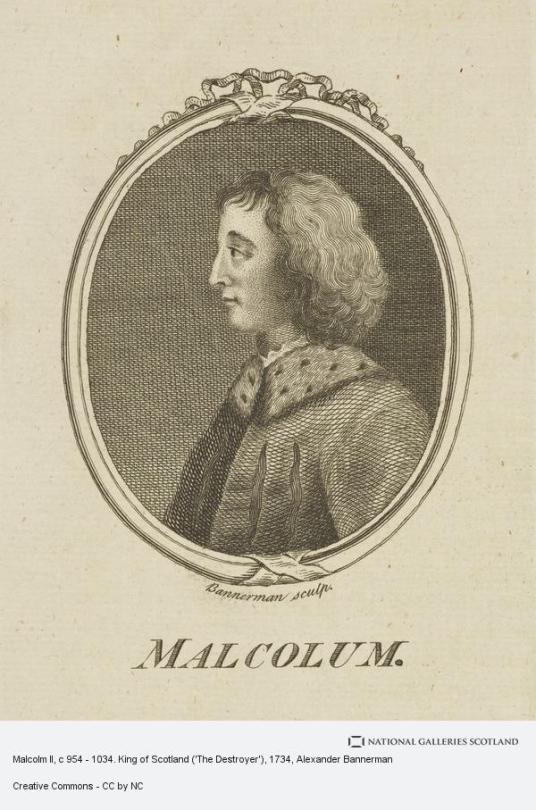
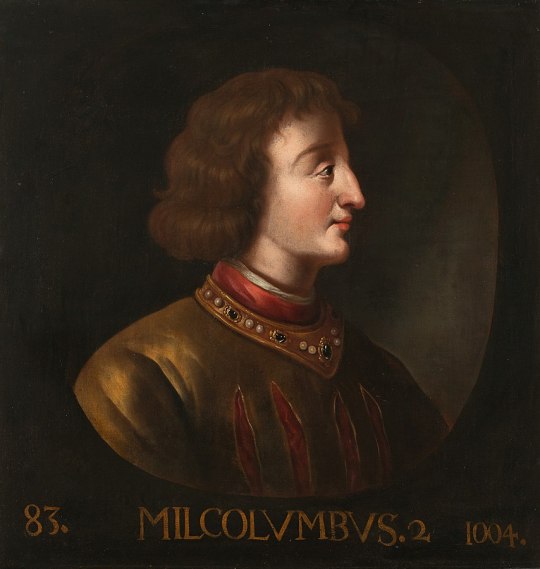
November 25th 1034 saw the death of Malcolm II at Glamis.
There's a lot to take in here, and a lot of supposition, it gets like that when you're delving into the history almost a thousand years ago.
Malcolm had been King since 1005, at this time Scotland was far from the nation we know it to be today, according to the Irish annals which recorded his death, Malcolm was ard rí Alban, High King of Scotland, this was a title given to what was probably the most powerful of the rulers, his fellow kings included the king of Strathclyde, who ruled much of the south-west, various Norse-Gael kings of the western coasts and the Hebrides and, nearest and most dangerous rivals, the Kings or Mormaers of Moray.
To the south, in the kingdom of England, the Earls of Bernicia and Northumbria, whose predecessors as kings of Northumbria had once ruled most of southern Scotland, still controlled large parts of the south-east.
Malcolm, or Máel Coluim mac Cináeda, to give him his ancient name, was ruthless, he sought to make sure to secure his family’s right of succession to throne, to do this he set about eliminating any possible claimants to the throne. There are scant details of the exact circumstances, but notable casualties included the grandson of Kenneth III, in 997, the killer of Constantine III is credited as being Cináed mac Maíl Coluim, “Kenneth son of Malcolm”. Now the historians debate whether this was “oor” Malcolm here, but don’t fully discount it.
John of Fordun a chronicler who we rely on a lot, writes that Malcolm defeated a Norwegian army in almost the first days after his coronation, but this is not reported elsewhere. Fordun says that the Bishopric of Mortlach (later moved to Aberdeen) was founded in thanks for this victory over the Norwegians, but this claim appears to have no foundation, so although Fordun is a very respected base for historians to delve into, I think we can probably put this down to a more modern phenomenon-Fake News!
The first reliable report of Malcolm’s reign is of an invasion of Bernicia, which is now south-eastern Scotland and North East England. It resulted in a heavy defeat, by the Northumbrians led by Uchtred the Bold, later Earl of Bernicia, which was reported by the Annals of Ulster. A second war in Bernicia, probably in 1018, was more successful. The Battle of Carham, by the River Tweed, was a victory for the Scots led by Malcolm and the men of Strathclyde led by their king, Eógan II, so the neighbouring Kings were not afraid of getting together for some English bashing, this was a time England was having to deal with heavy interference from the Norsemen.
Meanwhile during The Battle of Carham, in modern day Strathclyde down to the Tweed, King Eógan the Bald was killed, this is generally thought to have been when Malcolm, know by the southern tribes as Forranach’ meaning the destroyer took Strathclyde under his wing as part of the Kingdom of a growing “Scotland” but it was not fully part of the nation until Malcolm III, ( Canmore )
The good work he had done for his sons may have been for nothing, there is no evidence either survived after the year 1030, so the crown would pass to his grandchild. Truth be told the evidence he actually had sons is quite flimsy. He was a canny man though, and had married his daughters off wisely, to the Norse Earl Sigurd of Orkney., thus staking a claim for his forebears to the northern regions.
Strathclyde was to come back and haunt him though, Malcolm tried to place his grandson Duncan (later Duncan I of Alba) on the throne of Strathclyde. This displeased the Britons who had taken their eye off the ball while dealing with those pesky Vikings, but they it led to Malcolm’s assassination at Glamis on this day in 1034.
As per usual there are differing stories about how he died, on say fighting off bandits, another he was killed by the sons of Máel Brigte of Moray, a notable Pictish leader
He was buried in the graveyard at Saint Oran’s Chapel on the Isle of Iona.
Of his Dynasty, and his daughters he had placed in powerful families, the one wed to Earl Sigurd of Orkney, and their son Earl Thorfinn went on to bring much of Caithness and Sutherland into Scotland. One married Crínán, the Abbot of Dunkeld, and their son Duncan went on to succeed Malcolm II as Duncan I. And the third married Findlàech, the sub-king of Moray, and their son Macbeth went on to kill Duncan and become King Macbeth.
It’s all a bit complicated trying to piece things together through so many different sources but I hope the post makes some some sort of sense. A stone at Glamis is said to mark where he died, but another source tells me it is his gravestone contradicting the source that said he is buried on Iona! Such is the plight of trying to put a post like this together…….
13 notes
·
View notes
Text
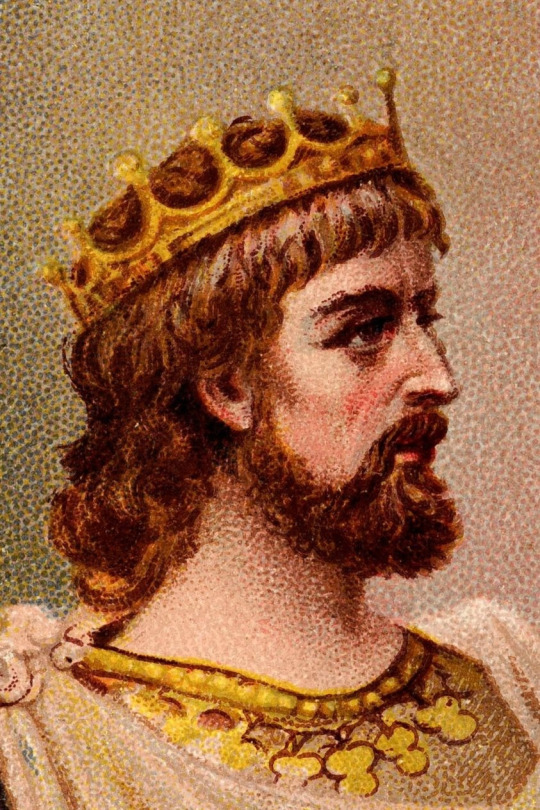
MANY HAPPY RETURNS - ENGLAND
1095 years ago today.
King Athelstan, (also spelled Aethelstan or Ethelstan), Alfred the Great's grandson, became the first West Saxon king to have effective rule over the whole of England. when various local kings accepted his overlordship at Eamont, in Cumbria.
On 12 July 927, Eamont Bridge was the scene of a gathering of kings from throughout Britain as recorded in the Anglo-Saxon Chronicle and the histories of William of Malmesbury and John of Worcester. Present were Athelstan, Constantín mac Áeda, Owain ap Dyfnwal, Hywel Dda, and Ealdred I of Bernicia. This is generally seen as the date of the foundation of the Kingdom of England.
1 note
·
View note
Text
Today, I'm delighted to host the review blog tour For Lord and Land by Matthew Harffy (historical fiction)
Today, I'm delighted to host the review blog tour For Lord and Land by Matthew Harffy (historical fiction)
@MatthewHarffy @AriesFirction
Here’s the blurb;
Greed and ambition threaten to tear the north apart.
War rages between the two kingdoms of Northumbria. Kin is pitted against kin and friend becomes foe as ambitious kings vie for supremacy.
When Beobrand travels south into East Angeln to rescue a friend, he unwittingly tilts the balance of power in the north, setting in motion events that will lead to a climactic…
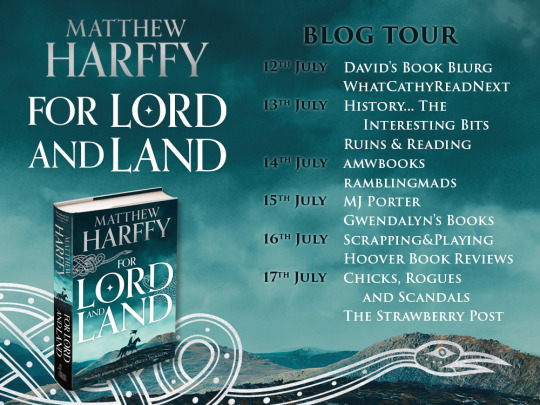
View On WordPress
0 notes
Photo
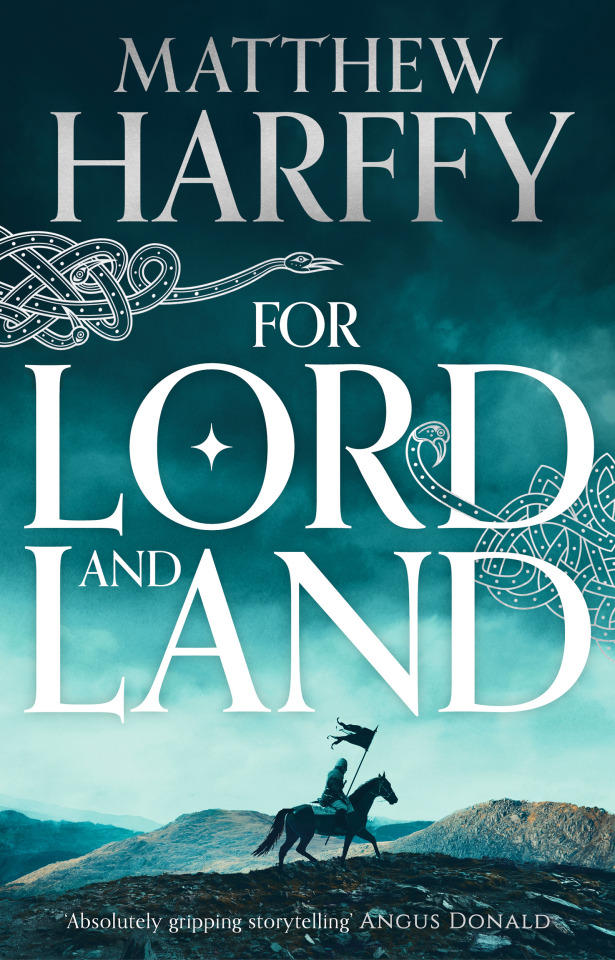
For Lord and Land by Matthew Daffy (The Bernicia Chronicles #8)
My Review (5*):
Matthew Harffy doesn't disappoint and this eighth instalment in the Chronicles of Berenicia is a gripping, action packed and fast paced story that kept me turning pages.
There's plenty going on in this story: battles, political intrigues, and a lot of action.
The author deliver a story that mixes historical facts with fiction and he did an excellent job in creating a series that taught me a lot about the dark ages in England and never failed to make me turn pages as fast as I could.
I love Beobrand and I love his character arc: in this story he's a loyal friend, a great chief and an interesting person. I liked the loyalty towards his friends and his men.
I think that loyalty, friendship are important themes in this story as fighting for a friend is at the base of this story and the loyalty amongst the Beobrand's men is what makes them good fighters.
The historical background is vivid and well researched, I usually look for places and events and it made me read some books about this historical timeframe.
Even if it's part of a series it can be read as a standalone but it's better to read the previous books.
I thoroughly enjoyed it and it's highly recommended.
Many thanks to Aries and Netgalley for this ARC, all opinions are mine
Synopsis:
Greed and ambition threaten to tear the north apart.
War rages between the two kingdoms of Northumbria. Kin is pitted against kin and friend becomes foe as ambitious kings vie for supremacy.
When Beobrand travels south into East Angeln to rescue a friend, he unwittingly tilts the balance of power in the north, setting in motion events that will lead to a climactic confrontation between Oswiu of Bernicia and Oswine of Deira.
While the lord of Ubbanford is entangled in the clash of kings, his most trusted warrior, Cynan, finds himself on his own quest, called to the aid of someone he thought never to see again. Riding into the mountainous region of Rheged, Cynan faces implacable enemies who would do anything to further their own ends.
Forced to confront their pasts, and with death and betrayal at every turn, both Beobrand and Cynan have their loyalties tested to breaking point.
Who will survive the battle for a united Northumbria, and who will pay the ultimate price for lord and land?
Retail links
Amazon UK: https://amzn.to/3e45G97
The Author:
Matthew Harffy grew up in Northumberland where the rugged terrain, ruined castles and rocky coastline had a huge impact on him. He now lives in Wiltshire, England, with his wife and their two daughters.
Follow Matthew
Twitter: @MatthewHarffy
Website: www.matthewharffy.com
Follow Aries
Twitter: @AriesFiction
Facebook: Aries Fiction
Website: http://www.headofzeus.com
0 notes
Photo

Killer of Kings by Matthew Harffy Killer of Kings by Matthew Harffy My rating: 5 of 5 stars I received the copy on Netgalley (but it took a bit to read it)
0 notes
Text
The Celtic Picts of Scotland
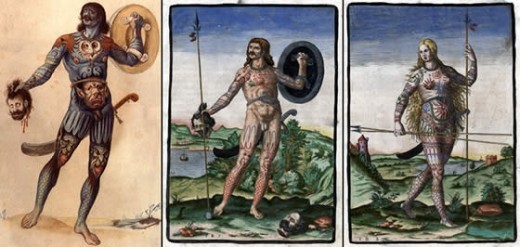

Three drawings of Celtic Pict men and women with tattoos covering their bodies. Pict was the Roman term for 'painted ones.' | Source
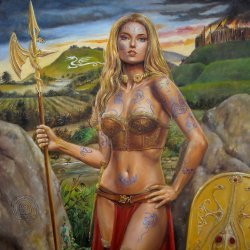
Illustration of Pict woman with tattoos. | Source
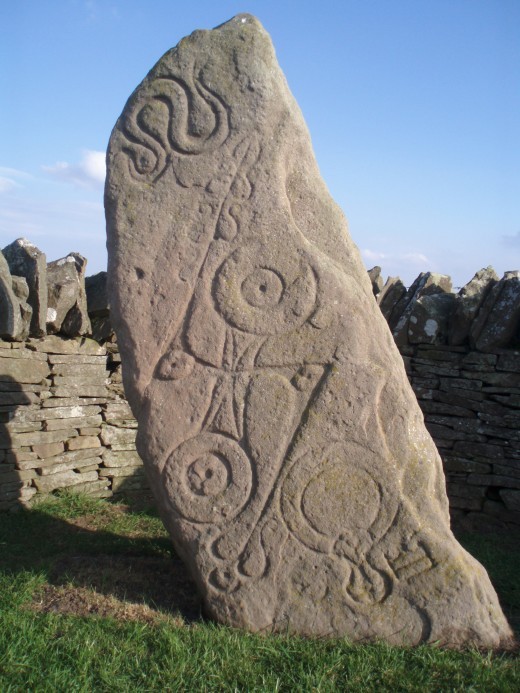
Serpent Stone with Pict drawings and engravings. | Source

St. Vigeans Stone - carvings by the Picts. | Source
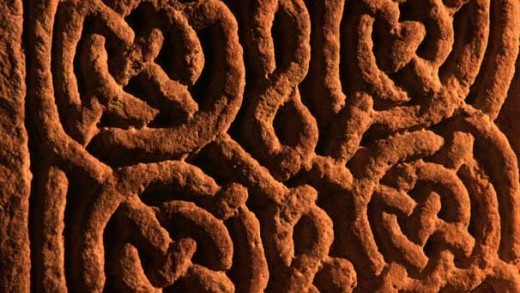
Pictish stone. | Source
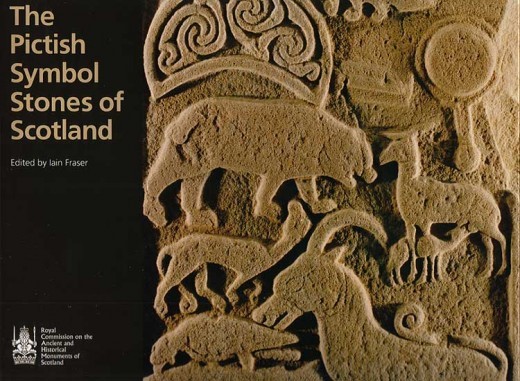
Pictish Symbol Stones of Scotland. | Source
The Celtic Picts
One of the most interesting of the Celtic tribes in the British Isles are the Celtic Picts. They inhabited what is modern day Scotland, north of the Rivers Forth and Clyde. What is unusual about this mysterious, enigmatic, and unusual Celtic tribe are the tattoos that covered their entire bodies and the war paint they wore in battle to frighten their enemies. They were a dominate force in what is now Scotland for at least 600 years and their neighbors were the Gaels, Britons, Angles and Vikings. They were called Picts by the Romans because they were "painted people" and even today we don't know what they called themselves. During the late Iron Age and early Medieval periods, the Picts were a tribal confederation of Celtic peoples living in ancient eastern and northern Scotland. They were a mysterious 'painted people' that just suddenly disappeared from Scotland and history during the Dark Ages. They were fierce Celtic warriors that stopped the invasions of the Romans and the Angles in their lands north of the Rivers Forth and Clyde. Because they left no written records or histories behind, all we know of their inhabiting what is modern day Scotland from the Pictish stones throughout Scotland and the Brythonic place name elements in Scotland. The first that the Picts appear in writing are from the chronicles of the Romans who had invaded Briton in 43 AD and stayed until the tenth century. It is believed the Picts over several decades had merged with the Gaels. They spoke the now extinct Pictish language that was thought to be related to the Brythonic languages spoke by the Britons who lived south of them in England. The Picts are believed to be descendents of the Celtic Caledonii tribe and other Celtic tribes mentioned by the Roman historians or on the world map of Ptolemy. Pictland, also called Pictavia, gradually merged with the Gaelic kingdom of Dal Riata to form the Kingdom of Alba, which eventually came to be called Scotland. Alba expanded absorbing the Brythonic kingdom of Strathclyde and Berciacian Lothian and by the 11th century historians believe the Pictish people and their identity had been subsumed into the "Scots" conglomeration of people. The Pictish society was typical of those Celtic tribes during the Iron Age in Northern Europe. They traded with neighboring Celtic tribes. Very little of Pictish writing has survived so what we know today of their culture comes from archaeological diggings and finds. We know about Pictish history from Bede's Historia ecclesiastica gentic Anglorum written approximately in the late 6th century and also from various Irish annals. We don't actually know what the Picts called themselves because Pict is what the Romans called this Celtic people. The Latin word Picti appears first in a panegyric written by Eumenius around 297 AD. The word means "painted or tattooed people. Picti seems to be a generic term for people living north of the Forth-Clyde isthmus. Old English called these people Pechts and the Welsh called them Fichti in ancient writings from Ireland. The name Cruthin, Cruthini, Cruthni, Cruithni, or Cruithini (the modern Irish Cruithne) was given to the Picts and to another group of people who lived alongside the Ulaid in eastern Ulster. Historians believe that a Pictish federation of Celtic tribes was formed partly as a response to the growth and northern movement of the Roman Empire. How and why this happened is not known today. Speculation is that they banded together to stop the Roman Empire from seeking their lands north of Hadrian's Wall. We have only heard these names from second or third hand from speakers of the Brythonic or Gaelish language as Pictish written recorded history did not begin until the Dark Ages. When the Angles of Bernicia over ran British kingdoms, one of which was the Anglian kingdom of Deira, they later became the most powerful kingdom in Britain. Deira and Bernicia together were called Northumbria. It is believed the Picts were probably a tributary to Northumbria until the reign of Brideimac Beli in 685 AD. The Anglicans suffered a severe defeat at the Battle of Dun Nectain that stopped the Angles northward expansion. The Picts sent the Angles back south to Britain. By the mid 9th century Vikings had destroyed the kingdoms of Dal Riata and Northumbria and greatly diminished the power of the Kingdoms of Strathclyde and founded the Kingdom of York. During a major battle of 839 AD, the Vikings killed King of Fortriu, Eogan man Oengusa. In 840's AD Cinaed mac Alpin (Kenneth MacAlpin) became king of the Pict. He united the Picts and the Scots and together these tribes formed the new Kingdom of Scotland. At this time they routed out the Vikings. During the Dark Ages, the Pictish language did not suddenly disappear but through a process of Gaelicisation ( which may have begun generations earlier) was clearly underway during the reign of Kenneth MacAlpin. By the 11th century, the inhabitants of Alba had become fully Gaelicised Scots and the Pict identity was forgotten. Later in British Isles history, the idea of Picts as a Celtic tribe was revived in myth and legend.
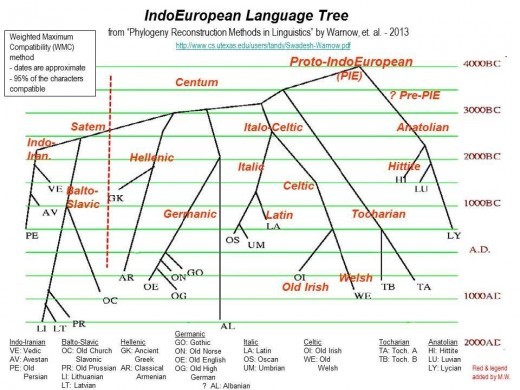
Indo-European Language Tree from which the Pictish Celtic languages are branches. | Source

Where Britons, Scots and Picts lived 4,000 to 3,000 years ago. | Source
Pict song
Pict Language
Although the Picts were Celtic tribes and loosely connected by language, the Pictish language has not survived. Evidence of a Pict language is limited to place names, the names of people found on monuments and the contemporary records. What this evidence tells us today is that the Picts spoke Insular Celtic languages. The Pict languages are related to the southern Brythonic languages. Place names prove the existence of historic Pictish settlements in Scotland. The Brythonic prefixes, Aber- Llan- Pit- in modern place names indicate regions inhabitated by Picts from the past: Aberdeen Lhanbryde Pitmedden Place names also show the emergence of the Gaelic languages into Pictland. During the 8th century, Atohll, means New Ireland and is an indication of the Gaelic influences in the Pict languages. Medieval Welsh traditions credited the founding of Gwynedd to the Picts. Wales has traced their principal royal families, the Houses of Aberffraw and Dinefur to Cunedda Wiedig to the Pict language and the Picts are said to have invaded N. Wales from Lothian. There are several theories of the Pict Language: Insular Celtic language allied with P-Celtic (Brythonic) language (Welsh, Cornish Cumbria, Breton, Brittonic) Insular Celtic language allied to the Q-Celtic (Goidelic) language. (Irish Gaelic, Scottish Gaelic and Manx) Germanic language allied with Old English, the predecessor to the Scots language. Pre-Indo-European language a relic of the Bronze Age. Most historians and linguists today attribute numbers one and two to the Pict language and agree Pictish was a branch of the Brythonic language. They do not believe today that numbers three and four attributed to the Pict language. During the 5th century, Pictish came under increasing pressure and influence from the Gaelic language of Dal Riata until its eventual replacement. Pictish influenced the development of Modern Scottish Gaelic by influencing the syntax of Scottish Gaelic and, therefore, bears greater similarity to the Brythonic language than does Irish Gaelic. Evidence of place names and personal names demonstrates that Insular Celtic languages related to a more southern Brythonic language that was formally spoken in the Pictish area. Throughout history, historians and linguists have looked into the Pictish language. In 1582, George Buchanan aligned the Pictish language with Gaulish, a P-Celtic language, and George Chalmers in the early 19th century considered Pictish and Brittonic one and the same. P-Celtic orthography in the Pictish king lists and place names were predominant in historically Pictish areas. And Celtic scholar Whitley Stokes published a philological study in Irish annals and stated that Pictish was closely related to Welsh. Toponymist William Watson also did research of Scottish place names and concluded that the Pictish language was a northern extension of British and that Gaelic was later introduced from Ireland. Today, Scottish Gaelic, unlike Irish, maintains a substantial closeness to Brythonic loan words and uses a verbal system modeled on the same pattern as Welsh. (Forsyth 1995a)

Archaeological dig in the village of Rhynie, Scotland showing Pict drawings. | Source
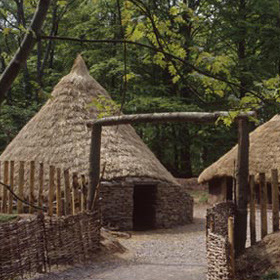
Reconstruction of round houses of the Picts in Scotland. | Source
Modern Pict Archaeological Find
Recently archaeologist, Dr. Gordon Noble (University of Aberdeen) and Dr. Meggen Gondek (University of Chester) who are both co-leaders of Rhynie Environs Archaeological Project (REAP), lead an archaeological dig of a medieval settlement and unearthed significant Pict artifacts. They consider this Pict find to have been a Pict seat of power in the tiny Scottish village of Rhynie. They unearthed significant Pict artifacts and a collection of eight Pictish symbols. They date their find of Pict life to have been from approximately 400-900 AD The symbol stones provide a record of their identity, beliefs, and lifestyle, although the carvings have not yet been translated. This is one of the first large scale digs at this kind of site. "This is one of the most significant finds of early medieval imported goods in the north of Brittany," according to Dr. Gondek, and it shows "an important force in power politics of early medieval Scotland." The remains are of what would have been an elaborate system of defensive enclosures including two deep ditches and a massive timber palisade and remains of further wooden structures including evidence of buildings. This archaeological finding is important because very little is known about the power structures and centers of the Picts. Noble and Gondek believe this find provides an exciting opportunity to find out more about how power was consolidated when the first kingdom of Scotland was emerging. According to Dr. Noblel, the findings of this dig will affect how we understand the trade networks and political relationships during this period. The imported pottery found at the dig is highly significant according him, and suggests Rhynie had political trading links with the kingdoms of the west. Dr. Noble said, "with this excavation we are getting the real physical evidence of who they were as a people - we just have to keep digging to find out more."

Scottish medieval ethnicity map when Kenneth MacAlpin united the Picts and Scots. | Source
Genealogical Pict marker found
Recently, Dr. Jim Wilson, chief scientist and senior lecturer in population and disease genetic at the University of Edinburgh, discovered a DNA marker that suggests that 10% of Scottish men are directly descended from the Celtic Pict tribe. That means, one out of ten Scottish men are descended from the Picts. With this new information the mystery of the mysterious disappearance of the Celtic Pict tribes from the Late Iron Age, who battled the Romans, has been solved. Today, through research from the ScotlandDNA, and ancestry testing company also led by Dr. Jim Wilson, has determined from finding a marker that a large number of descendents of these northern tribes, know as the "Picti", by the Romans meaning "painted ones," are living in Scotland today. Dr. Wilson, found a Y chromosone marker arising among the direct ancestors of the Picts, and concluded this is the "first evidence that the heirs of the Picts are presently living among us." He tested the father line marker and found, R1b-S530 in more than 3,000 British and Irish men. It is ten times more common in those with Scottish grandfathers than those with English grandfathers. Out of those tested, a total of 170 men presently living in Scotland have been found to carry this Pict marker although Dr. Wilson believes the number to be far higher. Ten percent of more than 1,000 Scottish men tested carry the R1b-S530 marker and only 0.08% of English men have it Wilson further found that only 3% of the men in Northern Ireland carry the Pict lineage, but it is only seen once in more than two hundred men from the Republic of Ireland. It is believed the presence of this marker in Northern Ireland is because of the plantations of Lowland Scots in the 16th and 17th centuries. What was surprising to Wilson was the really huge difference between Scotland and England. According to Wilson, "It is a clear sign that while people do move around there remains a core who have remained at home." He continued, ". . ., if we can see that about 10% of the father lines look to have Pictish origin, then we can make the prediction that probably a lot of other lines do." Wilson also agrees with what historians have found over the years about ancient Pictland. It has been defined by historians as the area where Pictish symbols stones and Pictish place names, such as those that have the prefix Pit- or Pett-. This heartland lies in Scotland north of the River Forth and Pictish names are seen specifically in Fife, Perthshire, Tayside, the northeast, and around the Moray Firth coastlines. Within Scotland there is a strong concentration of the R1b-S530 group in these areas. The Picts had the largest kingdom during Dark Age Scotland and fought off both of the Romans, Angles, and Vikings to preserve their independence. It has always been assumed the Picts disappeared, but with the discovery of the Pict genealogical marker, history has been re-written and it is now believed the Picts were over taken by political events becoming assimilated by incoming Scots invading from Ireland. And, with Scottish men today having the Pict marker in their DNA, it is obvious the Picts never completely disappeared.
Sources: www.bbc.co.uk/scotland/history/articles/kingdom_of_the_picts/ www.abdn.ac.uk www.scotsman.com/lifestyle/heritages/one-in-ten-scotsmen-descended-from-picts-1-2855561
Read the full article
2 notes
·
View notes
Text
Interview with Matthew Harffy @MatthewHarffy @HoZ_Books #BookTwt #BookTwitter 
Visiting the blog today is author Matthew Harffy. @MatthewHarffy @HoZ_Books #BookTwt #BookTwitter
Interview with Matthew Harffy
Author Bio
Matthew Harffy lived in Northumberland as a child and the area had a great impact on him. The rugged terrain, ruined castles and rocky coastline made it easy to imagine the past. Decades later, a documentary about Northumbria’s Golden Age sowed the kernel of an idea for a series of historical fiction novels that became THE BERNICIA CHRONICLES.
Matthew…

View On WordPress
0 notes
Photo
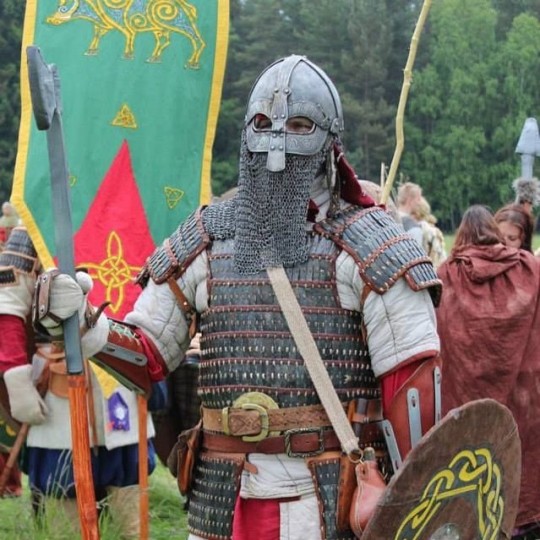
According to the literary sources and the chronicles (Jordanes, Beowulf epic and others) in that period the largest tribes of eastern and southern Scandinavia (i.e. modern Sweden and Denmark) were the Svears (Suiri, Suehans, the Swedes), the Gotar (Geats, Gott) and their probable branches – the Gauthigoth, Ostrogothae, Vagoth, Gutar, Theustes – the Jutes (maybe a tribal offshoot of the Gotar/Geats), the Heruli (the major part of the tribe played an important role in the Age of Migrations in the continent), the Screrefennae (the Finns, the sole non-Germanic people in the region), the Bergio, the Fervir, the Wulfingas, the Hallin, the Danes, the North Frisians, and in modern western Schleswig-Holstein the metropolitan Saxons (the core tribe of the Saxon confederacy). Western Scandinavia (modern Norway) was inhabited by even smaller tribes and clans, such as the Ragnaricii, Raumaricii, Otingis, Rugii (possibly the core tribe of the continental Rugii who settled in Pannonia and Italy), Adogit, Arothi and others. The Vendel graves are rich, and very similar to the ones excavated in Britain, namely at Sutton Hoo in the principality of East Anglia. After all, taking into account literary, linguistic and other evidence, it is possible that the dynasty of East Anglia was of Geat/Gotar origins (possibly a branch of the Wulfings). In my point of view, there is also a strong connection of the names of the Angles (forebears of the national name of the English) and the Ynglings (Ynglingas, Scylfings). After all, they seem to have been both bearers of the Vendel cultural elements. Taking into account that the Angles were a small tribe (less numerous than the Saxons and the Jutes: possibly a few clans) I would hypothesize that they were a tribal offshoot or close relatives of the Ynglings. It is possible that the Angles originating from modern Sweden were at first established in southern Jutland and modern Schleswig-Holstein and then invaded Britain becoming royal dynasties in East Anglia, Bernicia, Deira, Mercia and possibly elsewhere. We must also take into account that both the Angles and the Ynglings were royal clans/dynasties in their territories. https://www.instagram.com/p/B8JRGvxJbr0/?igshid=qhk3lf1l1dgq
0 notes
Text
This stream of consciousness inspired by HistoriaBrittanorum’s Battle 8, the Battle of Caer Guinnion/the White Fortress. It could be the Fort of the Legions as well, but York’s Latin-Brythonic Name of Eboracum, actually shares a root with the Latin of Ivory (eburone,or something??...Ivory has a sense of Whitish—maybe York’s Walls, repaired by Constantine, appeared white when viewed from a distance??), along with other speculations of meaning (its British/Welsh form of Efrauc mimics the AngloSaxon ‘Eofor’ which means Boar...not related, I don’t think, unless the Boar was the standard of the VI Legion Victorius, stationed in York, but that might have been a bull actually??). The boar belonged to one of Britannia’s other legions, I think.
Anyway, Nennius writes that it was this Battle in which Arthur bore the Image of the Virgin on his shield/suspended across his shoulder...like a shield.
In Welsh ballad tradition, Arthur’s shield is translated as ‘The Face of the Evening’. This was a common epithet given to the Virgin Mary, But was actually a phrase directly acquired from Venus-Aphrodite, as the planet Venus appearing with the Sun and Moon as the Morning Star and Evening Star. Venus, of course, was the Babylonian-Sumerian Ishtar/Inanna. The Queen of Heaven, literally, and...another epithet of the Virgin Mary. Celestial Brigantia was another appelative for the same goddess, as understood by the Romano-British. A tutelary goddess of what had been the most influential tribe of northern Britain, even after Roman occupation, through the 3rd c AD at least. And dedications to ‘The Virgin’, meaning ‘Virgo/the Constellation’, alluded to her archaic Sumerian origins as the great Creatrix of Life/Death/Learning/Science/Poetry/Music/Agriculture/Law/Civilzation/War/Medicine/Justice/etc...all the aspects embodied historically by Inanna, the Face of the Evening, who becomes Freya-Frigg-Skathi-Nanna-Hella in the Nordic pantheon.
Anyway, Arthur, Uthyr in my take, when it’s mentioned by Nennius he bears the Face of the Virgin into battle, ACTUALLY harkens to a pre-Christian concept, molded to Christian tastes, of the Archaic Virgin. IDK if that was Nennius’s intent, or if Geoffrey of Monmouth understood that context when he compiled his epic 300 years later. Maybe he did. After all, it’s Geoffrey who conceived of Morgan le Fey/of the Faery, as the most learned in medicine, math, and astronomy, of her 9 Muse-like Sisters, who resurrect not just the Muses, but 9 Gallic priestesses who resided upon Sena, off the coast of Brittany, known as the Gallicenae. And, Geoffrey liked his Queens. He had no problem writing powerful women into his epic. After all, it’s from Geoffrey Shakespeare drew his inspiration for Cymbeline and King Lear/Cordelia. Anyway, the motifs of the Arthurian codex, resound from (my own speculation) a much earlier, borrowed concept lying somewhere between Inanna, and Athena’s aegis of the Gorgon (Medusa, being an aspect of Athena actually, and Andromeda as well. The name alone of Andromeda, means, in simplistic breakdown, ‘Ruler of Men’. And the symbolism when she’s chained to the rocks before the Sea-monster, Cetus, mirrors Inanna in the Underworld, having passed the 7 Gates of Hell, stripped of her Status, judged and condemned by her Sister, Ereshkigal, to be hung by chains, and tortured into death for her arrogance in daring to conquer the Land of the Dead). I love how unsentimental these first Sumerian myths were before they became softened by later Greek and Roman classical writers.
What Anglo-Norman Medieval authors borrowed in the term Virgin, has nothing to do with purity, or a woman with an intact hymen.
Virgins slept with men, or women whenever they wanted. The even had children, with or without a male progenitor. The oldest sense of the word ‘Virgin’ was an heroic woman. A woman complete into herself, who took on the traditional tasks of men, and women, w/o the assistance of a man. Or, like a Shield Maid, ALONGSIDE AND EQUAL with a man. Risking death, torture, rape, loss, or whatever else stood in her way (think Lagertha of Vikings), to triumph in the exact same conditions as their male counterparts. Sometimes with more ruthlessness, or more compassion, but human all the same, and judged by her actions before her gender/sex put a label on those actions. A Virgin has no bond with a husband, to whom she was subservient. That’s all the word meant.
Thus, Guinevere—The Face of the Evening, the Raven Queen, Ruler of Valentia Beyond the Walls, uniting the Picts and the Northern British houses under the Banner of Old Brigantia, to the aide of a southern prince, a son of Tyrants. Uthyr, bastard son of Vortigern, begotten in an act of humiliation upon Ygerna, the wife of Vortimer, Vortigern’s eldest son, dishonoring Vortimer for his rebellion against his father. In Uther’s veins runs the blood of Irish nobility (Ygerna comes from the tale of Ingren, the daughter of the Leinster King, Crimthann mac Ennais—here, as in Welsh geneolgies—Ingren/Ygerna is the daughter of Amlothi/Hamlet actually, a Danish Sea Raider who sleeps with one of 3 wives of Crimthann— and joins the Irish dynasties of the Deisi and the DalRiada to the British/Picti/Germanic families inhabiting the lands United from the Atlantic to the Irish Sea and North Sea and the Black Sea rim), Roman magistrates, and Waelsung heritage (Sigfrid, Sigmund, and Sinfjatli of Niebelung fame) that have shaped Uthyr as a son of Vortigern, rebelling against his father, and allied with Danish/Swedish/Geatish houses of Northmen, who have their own rivalries against fellow Danes/Swedes/Jutes/Saxons. Geoffrey’s Yder/Idris/Hidernus/Edern/Eurderyn—Eutharios/Eutigern—of the Black Danes, becomes my Uther, allied with Hrothgar/Swerta, an exiled Dane living amongst the Angles of NE Britain (This is based off Hrolf Kraki Saga. The Danish king of Beowulf, Hrothgar/Hroar...Rodger in English , who’s forever a battle-brother of Uther, in later decades. It was said Hrothgar converted to Christianity, and ruled his hall of Heort/sp?? as a Christian King). Uthyr, a quasi-outlaw, exiled bastard residing between Gaul, Scandinavia, and Byzantium in his youth, a mercenary andca Sea Wolf/Sea-Raider finally reuniting with his older brother, the renowned Vortimer/Riothamus/Embreis Wledig, to wrest back their authority to rule from their father, and the Jutish/Saxon houses opposed to the Danes/Geat/Angles.
Arthur comes later, as Guinever’s son, either—and both—by Uther and Theoderic the Great. Dynastic imperatives here span the transformation of Western and Northern Europe from Scandinavia to Ostrogothic Italy, and in-between. Guinevere, Uther, and Theoderic, encompass a strategy of this New World of civilizing Romanized Barabarians, amalgamations of Tribal cultures reviving old Roman precepts of rule and law, between Britannia on the Western end of Old Empire, to Ostrogothic Italy, that Theoderic seeks to establish as independent from Constantinople. Lying in their midst, a lion at the heart of Gallia, are the Franks, with Clovis clawing the Merovingian hold to sever Britannia, and Visigothic Spain, from Italy. Willing to ally with Byzantium to do so, in order to distract Theoderic into defending his eastern territories of the Adriatic, Clovis succeeds in driving the last of his Visigoth brethren out of Gaul, and the inception of the Kingdom of the Franks arrives like a tempest. And finds Uther slain with his long-time war-band on the fields of Poitier, in 507, and Arthagenes (a version of a title of Hercules/the Hindu-Hellenic-Persian Verethragna. The name resembles variations of Artogenes/Bear Kin or Bear Prince/Artius/Arthan/and Artogneu...from that hideous inscription, but in my mind, while not ‘King Arthur’, lends enough similarity to said names, I’m comfortable basing his persona, ultimately, off the mythic concept of Arkas/Arcas, the Bear Prince, who circles Polaris, son of the Bear Goddess/Artio-Artemis-Callisto, and the War-Lord/and the Guardian of the stars, Bootes and Draco), his son, or Throderic’s, serving in Theoderic’s forces, in the counter-campaign to win back southern Gaul from Clovis. Incidentally, one of Theoderic’s generals bears the name Ebba, or at times conflated as Eobba (like the Bernician king of the Anglo-Saxon king lists), as well as Ida—the first king of Anglians who defeats ‘Outigern’ (in my take, the son of Arthagenes, by a northern princess, Vivian/Nuvien—Nimue-which is Gaelicized as Bebhionn, and feeds into the renaming of Din Guardi as Bebenburg, after Ida marries the British princess, Beara, according to certain chroniclers of later era. Beara is my Nuvien, a British saint actually, and the name from which Vivian and Nimue derive, and Dutigern, her son, a form of Outecorigas, recorded on Celtic inscription from Dyfed, I think, as a Protector of the Region.) Where Ida accepts Outigern as a son, And so, at Din Guardi/Bamburgh in 547AD, Ida establishes the kingdom of Bernicia. That will, by his grandon’s time, unite under Aella of the Deirans, forming Northumbria. The Star of the North, and its emerging repository of Anglo-Celtic-Roman culture by 600-800AD.
This segment involves my revision of Theoderic’s daughter, Amalsuentha (a version of Melisande), actually being rescued from her assassination (she was strangled in a bath, around 534, by her cousin who coveted the throne of the Ostrogoths, which opened up Justinian’s excuse to invade Italy), as more of an comedic abduction by Offa/Yffi of the Deira/East Angles, Ida, and Cethegus, whose my version of the warrior-saint, Cathog/Cathomalos.
She becomes my version of Marcia—founder of Mercian law, as Geoffrey attributes Alfred the Great’s codex of law and rule procedure to a Marcia, a great queen of wisdom and courage, who...probably didn’t exist.
Anyway, I’ve now expounded to the point of random outline, and the tale which falls between my 2nd Century Artorius Castus Tale (that might go back to 1st Century Cartimandua, Agricola, and Arviragus/Genvissa, as mentioned by Geoffrey), and PreRev Paris with Jefferson and his Scottish lady physician.
As an underscore to the Uther/Guinevere tract of Gwen as Queen, and Defender of the North, later Uther’s Wife, and Theoderic’s lover, there’s this scene that comes from the Welsh Mabiniogion, of Culhwch and Olwen. The tale is basically a Welsh version of the Norse myth of Svipdag-Odr, and Menglod. Svips is cursed by his step-mother to only fall in love with a particular woman, who happens to be the daughter of a fearsome giant, and impossible to win. Unless the hero undergoes a series of impossible feats which he overcomes, of course, to finally win his bride, and kill her monster-father.
Anyway, there’s this passage Arthur speaks when his cousin, Culhwch arrives at Arthur’s hall, seeking some Band of Bros to help in his quest of Lady Love.
Basically, I’m a kow-tow to those ‘rules of hospitality’ we like to romanticize were inherent to tribal societies of Germanic and Teutonic origin, Arthur welcomes his cousin with every promise to provide him with anything he needs on his quest, except [paraphrased from rusty neurons]: “...my sword, my spear, my dagger, my ship, my shield, and...my Wife, Gwenhwyfar.”
Every time I come across this line, I think that’s either the coarsest of insults to his wife, and his queen, listed in an intinerary of his weapons. Or, it’s the most oblique of compliments to his wife. As Guinevere is his greatest weapon, even over his other enchanted implements, and won’t be utilized to any other man’s cause than his own. I’d like to add, that would be at her discretion of course.
Anyway, it’s this exchange I use between Uther and Theoderic the first time they meet on the eve of Badon 2.0, after Gwen has escaped Frankish forces. And masterminded winning a bunch of heavy cavalry to her cause/Uther’s cause in the civil wars erupting across their island in the late 480s-491/493AD. This coincides with Clovis’s campaign against Soisson and the last Roman count, Syragius’s kingdom, falling to Frankish hands. Somewhere in there, I fanciful-ize Theoderic has come to Northern Gaul in the years of his own campaign to win Italy against Adavacrius (my Erp/Hyrp/Tge AngloSaxon Eadawacer—the son of Gudrun of the Nibelungs-Burgundians, and the widow of Sigfrid of the Walsungs. He’s Odovacer, the Heruli chieftain who deposed the last Roman Emperor, in 476), seeking an alliance with Clovis, a most brilliant and Mschiavellian ruler of Merovingian bent, asking for Clovis’s sister, Audafleda, as his bride (she does eventually marry him—the mother of Amalsuintha).
Somewhere in there, we have Gwen being betrayed by her own sister, Cywyllog, whose married to Medrod, Uther’s nephew/cousin, and Gwen trying to reach Uther in Brittany/Aremorica, as he’s fighting for/or against Clovis, depending on when Clovis attempts invading north of Orlean, into the lands of Alani tribesmen, and the British colonizers of Brittany. In an attempt to set the truth before Uther that there’s been a conspiracy weaving lies that she’s tried seducing/promising their lands to Cerdic of the Gewisse/Wessex and his son Cynric, when it’s actually their daughter Gwenog, she’s promised to Cerdic’s son when they’ve come of age, attempting to win an alliance against Medrod/Cywyllog, Medrod’s messengers reach Uther first, and Clovis’s troops intercept Gwen’s small landing party, killing her own guard, and capturing her.
Brought before, he disavows her, and rips off her neck-ring, that bore the symbol of Brigantia, and the right of her rule of the North. That Uther truly has no authority to deny her. His action breaks the alliance of Alba from Britannia, and only lends further fuel to Medrod’s attempt at usurpation in Britain.
The fracturing of allegiances proves beneficial to Clovis, while he entertains Theoderic’s proposal.
Uther, casting off his wife as a traitor, readies to return to Britain, facing the the forces of Medrod, his and allies of varying Irish/Northern British/Teutonic mix (where we see Onale/Aella Bretwalda, and his sons, Cymen-Cissa and Wlencing, arrive enforce, a Nordic king establishing a foothold in Sussex—the tale involving the clash of Swedish-Geatish-Norwegian-Danish-Anglian houses, from the tale of Ohtere and Onela, and the sons of Ohtere, Eanmund and Athislus/Aedgils). Gwen’s leftvin the custody of the Franks, to be disposed of or dealt with after the coming wars. It’s here Theoderic crosses paths with Gwen, his first love from decades before, when they been teens/young adults coming of age in Rome, in the last years leading up to Odovacer’s victory. And Theoderic, never trusting Clovis, devises an entirely different plan than what he’d first come north for, his own war stalled at the Walls of Ravenna, and needing a naval fleet to blockade the harbor that keeps Odovacer afloat, and fending off the final victory of the Ostrogoths.
In a borrowing of the legend of St Genevieve of Paris, Clovis sends Gwen on a time wasting errand to Tours, where she’s meant to secure a bread supply fending off famine in Paris, whilst she, of her own design, crosses paths with Clothilde, and arranges a marriage between Christian Frankish princess and the heathen Merovingian conqueror.
Theoderic’s 1000 Strong Sarmatian Cavalry who have served him as indentured warriors since his defeat of their city, Singidunum, in 474AD, sweeps in as the entourage returns from Tours to Paris, Theoderic intent on rescuing Gwen back to Itsly, or using her as hostage-ransom to win Uthyr’s naval force of Black Danes.
Backstory here is, Gwen and Theo didn’t part well in Rome all those years ago, when he only knew her as some British orphan, and later discovered her heritage as a princess of northern Pictish/Roman British nobility, made an offer of marriage to her at that time just after his father had passed away, leaving Theoderic the heir of the Wandering Kingdom of Ostrogoth Amalungs. He rejection out of loyalty to her father and her people offended him, thinking she spurned him out of pride, thinking herself superior to his barbarian heritage, however Romanized, educated in the court’s of Constantinople.
And once more, it’s Gwen who rejects his proposal, but w/o allies in the wilds of Northern Gaul/Frisia, where Theoderic’s forces are camped, she learns of his Cavalry, their decent from the other 2500 Horselords who had been sent into exile by Marcus Aurelius centuries ago. And it’s Gwen, a descendent of those same Sarmatians, the other 5500 Iazyges, sent to Britain by Marcus Aurelius centuries back, on the side of her Pictish mother, whose blood ran back to the Horse Goddess of the Sarmatians when she and her warrior-priestessss first arrived in Britain (see the intriguing grave finds of 2 women buried with weapons and Cavalry armor from Brougham found in 2004–thought to be of Hungarian origin, and dared to mid 3rd c AD), following their men to exile. And it’s Gwen who speaks the old tongue of Saranyu, mounted on a stallion, galloping amongst 1000 Catarphactii, with their Standard aloft in her hand, moving between their ranks, and rallying them in the language of the Iazyges, turning Theoderic’s offer for refuge in exchange for becoming his queen or mistress, and instead, compelling 1000 HorseLords to her cause, tge cause of Britannia, by weight of her lineage, and the promise to no longer “be considered slaves, but citizens” with lands of their own upon British shores if they were, to once more, fight on the Isle of Mists, for her king, and her land (mmm, I always loved that scene of Daenerys suddenly winning the Slave Army of Unsullied...this is my tribute of the Raven Queen to the Dragon Queen. Cliche is as cliche does...but, I’m hoping my version contains some originality).
And Theoderic, thinking himself the savior, suddenly becomes the usurped, as his own officers, Vidia, Hjalmar, drawn from the sagas of Thiodrrek, always loyal to him, follow her command to apprehend and restrain him, till she can figure out what to with him.
Which, in her Gwen way, involves an intimate scene, and Theideric’s Promise to fightvat her side, in support of Uther. Which is where we arrive with Theoderic and Uther meeting. A very stoic and grieving Uther, whose son, Llacheu, had been slain, the son of his youth, fathered years before with the matron/abbess of the monestary-college where he’d been educated outside of Avillion/Gaul. And who’d sought service in Uther’s court when he’d come to adulthood.
Uther, who’d taken his dead son to The isle of St Michael’s Mount, in a confrontation with Medrod’s greater numbers, in a battle he’d thought lost initially, until the 11th Hour arrival of his wife, who he’d cast off in a rage of jealousy and intriguing falsehoods. And by the gods’ justice, he’d been punished by the loss of his closest brothers, Cei amongst them, and Medrod, who he’d always loved, turned against them.
Gwen, once the enemy was in retreat, beaten once, but hardly defeated, who searched for her husband in a panicked dread, not finding him amongst the fallen, but following the trail of bodies strewn in his wake all the way to the tidal Chanel looking out to St Michels. And the beacon, the pyre burning there, where dead Llacheu lay, with his father mourning him, who wished to die himself. Haunted by the the ghost of his dreams, his wife and Queen, the mother of his son and daughter, guardian of his vision, takes shape out the shadows of a ruined villa’s garden—where flames dance in the night as Llacheu’s body turns to ash and smoke, and the stars witness with icy diamond beauty, the tragedy of men inviting war and sorrow.
She wakes in his arms with the dawn, and he knows this was dream.
He sees the neckring in place of the one he’d torn from her throat, bearing the insignia of the Wulkknot, 3 interlaced triangles, just above her collarbone, and Uther knows this as the Sign of Wotan. And the Symbol of the Ostrogoth Amalungs.
Her lips are soft upon his, her gray eyes, clear as the sun shimmering across the steel waters with the dawn, entreat him.
“You’ve lost a son, but where a brother has fallen, and one turned traitor, you may have gained another. Meet him, Eurdeyrn. And you might find a kindred soul there.”
Which finds him striding through their camp, arrayed to allow for a makeshift infirmary, where Gwen will serve later, and the commander’s quarters marked by the standards and banners of the companies of his army. The cheers and relief resounding through the throngs as his officers welcome him in a rush of greetings, condolences, assurances of faith, and endurance, these men who’ve bled and wept with him, to victory and loss.
And more, the furious cheer that rises through the assembly grounds, at sight of his Queen at his side. North and South, Alba and Britannia United once more.
He pauses. The guards align, stepping aside to allow for Uther to face this Ostrogoth lord, followed by his own comitatus/elite officers—some them who’d committed sedition only 3 days ago, at the pledge of this Queen they all believe a goddess in human form, rather Horse Queen reborn. Gwen has never hestitated to take advantage of old symbolisms, equine goddesses or Ravens some of the most powerful divinties many of these nomads or barbarian tribes, recognize, only a generation or two as converts to Christ, separating them from their pagan forefathers.
He’s well-formed, this Maering, a Chieftain who styles himself an enlightened philosopher king. Eyes like marine seas meet Uther’s amber gaze, guarded. Aquiline features of boldness and depth define the high brow, the angular cheeks, fine nose nose, and strong jaw. An assembly not unlike Uther’s own, Theoderic’s grandeur smacks of brilliance, and sun, a lion in his prime, his red-gold hair plaited, the fine stubble of his beard, flecked with gray. Theyre of an age, and similar physique, each just on the other side of four decades, Uther’s image, more somber, the Winter King indeed, tresses of oak brown frosted with white, drawn back, long at his neck, his posture straight, muscled body riddled with scars of old wounds, his joints feeling the damp and cold more so than in younger days. The hard lines of cheek and chin might have been sculpted from harshness through the years, but the lucidity of eyes that carry the cast of autumn leaves struck of rain and setting sun, soul-searching, and somber, so it’s said Uther reads the hearts of men the way migrating birds read the change of season. And he sees Gwen was right. This man has born the burden of his people for over a decade, aimless, as mercenaries. A client-King to Constantinople, consul, and conqueror, fighting other men’s battles so his nation might survive for another season. Guests at the mercy of ally and enemy, subsisting on fortune’s vagaries. Uther knew that life.
And he hears that understanding in Theoderic’s tone, words of greeting, without supplication.
Uther responds with the same reserve, the words a ritual of recitation. A host welcoming. A guest received.
Men will recount later, over beakers of ale, in a commons awash in song, and roasting meat, lit by torches, and hearth fires blazing near the sorted benches, how they met, the Stag and the Stallion, the Lion of the Amalungs and the Wolf of the Waelsungs.
Then, Theoderic nearly shatters his composure. “You lost a son here. I too, have lost a brother. These battles we fight to carve some kind of future demand sacrifices we could never have foreseen. But in the struggle, we may find blessings of unknown delight as well.”
Theoderic’s attention shifts to Gwen. There’s no coveting or lust, as he might have supposed from a lesser man. Yearning shines from the depths of his heart. And worship. Untarnished and without shame.
In the presence of her husband, who’d cast her off in a fit of wrath and grieving doubt.
Gwen’s silence, her wary glance that moves between the two men, the tension tightening her mouth, belies her anxiety. She has a tendency to brusqueness when she’s uncomfortable, and clear she’s far from easy with this encounter. She gathers herself, some internal motive rising that bades her salute each man, a crisp nod between them, as she extricates herself from the awkward company.
“Medrod’s forces regroup in the North. We have much to do if we’re to drive this momentum to victory. And I have much to catch up on, before we march.”
Uther, then Theoderic, neither raise objection, a small bow, an *as your leave*, as they watch her amble off toward the one place which has always been her retreat. Medicine, and the surgery-taking rounds of the wounded before she’ll take on a shift. Determining clearance for the coming transport, and those who’ll be left at the encampment to recover or die.
Their respective guards maintain a distance meant to preserve confidences without seeming to neglect their commanders.
A strange quiet flows between them. A calm Uther finds an effective tool. Men are apt to let tongues loosen in silence, to cover their nerves, and spill Revelations they otherwise wouldn’t.
Theoderic doesn’t appear unsettled/discomfitted. Shrugging easily, and motioning with a look toward the commanders tent, he’s almost conversational. “I imagine you’d welcome a bath, and a meal first, before we get to the grit of how we proceed from here.”
How naturally men seem to look to him, seeking direction or simply a pleasantry. That irks Uther, noting as well it’s his own tent toward which they’re headed.
“I saw the pendant at her throat, Amalung.”
Theoderic slows, hearing the stiff words, halting with Uthyr, to face him once more. Curiosity rather than caution shining in his eyes.
“Whatever courtesy of treaty you seek in exchange for your service, I will do all in my power to honor. But this will not include the right of my spear, my sword, my dagger, my flagship, my shield, and most of all my wife. You’ll not have my wife hereafter. These sacred insignias conveying kingship, right to rule. Most of all, his wife.
A moment only, of consternation, flickers across Theoderic’s features, calm, seeming to weigh responses. Until he breaks into a chuckle, and a commiserating glimmer directed at Uthyr. “Only it was your wife who had me, rather. Not the other way around.
—
Shout out to G’Schola’, and his Tower Down the Tracks, at these turnings of the year...
And to my concept of Guinevere. It’s hard for me not to see her as something of a queen, and warrior. And of Scottish origin. Like Robert Graves (who took a much more arcane synthesis of Welsh bardic poetry), one of my favorite poems is the Battle of the Trees/CathGoddeu...
The part where Gwydion, son of the goddess Don(a), raises the trees and flowers, earth, roots, vines, etc to aid in the kingdom of Gywnedd’s battle against the southern Welsh kingdom of Dyfed, I’m convinced, inspired the Battle of the Ents in LotRs (Graves and Tolkien shared a personal and professional relationship of scholar and ‘belles-lettres’...
Ents, and the Welsh poem, both harken back to Irish myth, and the 2nd Battle of MaghTuredh.
Where Lugh summons his goddess/sisters-sorceresses, to aid the Danaans against the Fomori, and asks what weapons they’ll bring to their fight.
And the sisters reply:
"And ye, O Be-cuile and O Dianann," said Lugh to his two witches," what power can ye wield in the battle?"
"Not hard to tell," said they. "We will enchant the trees and the stones and the sods of the earth, so that they shall become a host under arms against them, and shall rout them in flight with horror and trembling."
That, in tandem with the more ancient Babylonian tale of Ishtar’s Descent to the Underworld, carries such resounding power in the primordial concept of goddess and queen, where Ishtar stands before the Gates of Hell, her sister’s domain, and demands entry to pass.
“If you do not open the gate for me to come in,
I shall smash the door and shatter the bolt,
I shall smash the doorpost and overturn the doors,
I shall raise up the dead and they shall eat the living:
And the dead shall outnumber the living!”
Can you see where GrrMartin drew his inspiration for Daenerys, in the 2nd Season, where she promises destruction of her enemies, and those who’ve harmed her friends (“...I’ll lay waste to enemies, and burn cities to the ground!”). Basically, she’s Inanna/Ishtar at the Gates of the Hell.
That’s (part) of my concept of Guinevere—the queen who summons the Houses of the North, and unites them under an old Battle Standard of Brigantia (which is the Cross of St Bridgid...that mimics a tetraskele), marching them south to the aid of Uther outside of the Walls of York.
And in the Cavalry charge of the northern host, amid a rising thunder/snow storm (I place this battle circa Nov/December...not usual for campaigns, but that’s part of the desperation here...in post-Roman Britain), where men who are frost-bitten, exhausted, famished, at the edge of defeat on both sides—Jute and British—blood-blurred vision, obscured even more by slashing winds and sleet and mud (hopefully the horses don’t spin out), it’s Uther, or Uther’s more literary-inclined brother/cousin Brochmal (my version of Bedivere/Bedwyr) who quotes the old Irish tale, as Gwen’s forces align on a distant bluff across the Vale, and she raises the Sword of Ares (yep, she’s also the one who pulls ‘the Sword from the Stone’...based on her mother having sacrificed herself years before, drawing the sword of the Sarmatians that attracted a lightening strike at the same moment she plunged the blade into an oak, and promptly induced one of those conductive lightening strike scenarios that passes through a bunch of people and explodes the tree/ground/and people around them...thanks Wilderness Medicine workshop!) as the rallying point of the charge.
With Gwen’s trio of Ravens circling about her (they are cool birds—they can live like 25-50 years, are as intelligent and social as dogs/horses/mammals/other smart birds...and there’s a rare white raven variant that occurs), symbols of her ambivalent relationship to Wotan and Christ, as well as being classically educated, and thus, agnostic ultimately, to Gwen, her Ravens have always reminiscent of the Morrigan—the triple goddess of Death, Battle Frenzy, and well...sex/life-rebirth.
Amid the building of horse, down into the Vales of York, men’s senses to confused by the icy winds and rain, not always sure if they’re even striking at friend or foe anymore, the Horns blasting different signals sounding like Heimdallr’s Gjallhorn of Ragnarok, imagination, and delusion, or delirium form shapes in men’s minds, out of storm cloud, sleet/hale/, and bloodied earth, mucked by entrails, corpses, and excrement of human and beast. British ally, or British foe, clashing spear and sword with shields, they all swear in the charge of the North, do the phantoms manifest, shadows of past legionaries, and Roman auxiliaries, the ghosts of the first Sarmatian horselords, taking shape from earth and most, fleshless memories of gore, long-dead and fallen, whose blood quenched the thirst earth in defense of the Hallowed Isle, summoned once more, unknowingly, by the vision of mere mortals whose vision of a new Britannia rises from the past, and stretched into a tenous future told in tale of the Stars...
Okay, Bunnygrrl obscura done for today...
0 notes
Photo
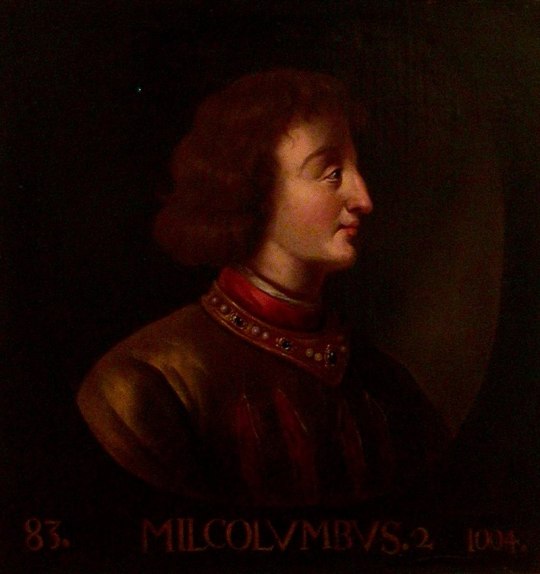
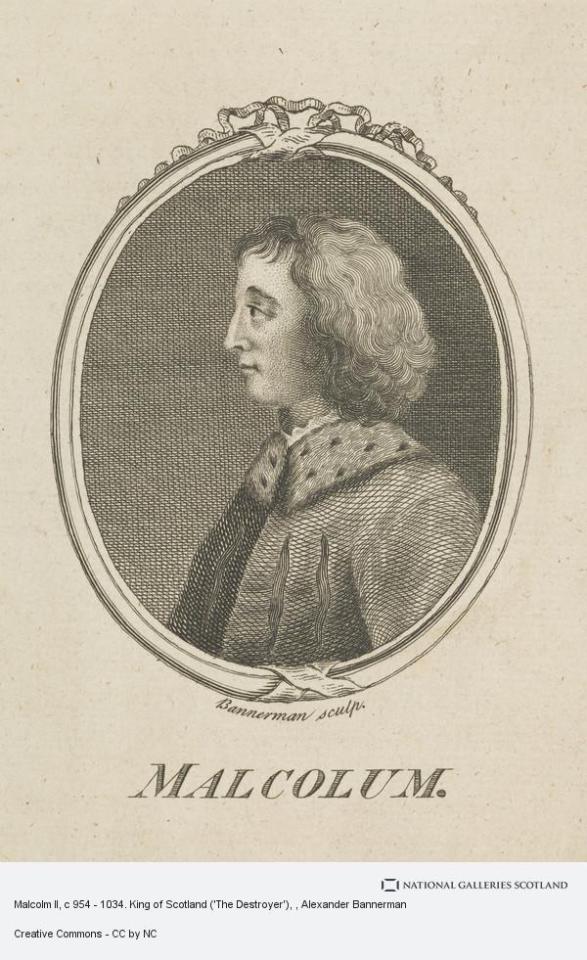
November 25th 1034 saw the death of Malcolm II at Glamis.
There's a lot to take in here, and a lot of supposition, it gets like that when you're delving into the history almost a thousand years ago.
Malcolm had been King since 1005, at this time Scotland was far from the nation we know it to be today, according to the Irish annals which recorded his death, Malcolm was ard rí Alban, High King of Scotland, this was a title given to what was probably the most powerful of the rulers, his fellow kings included the king of Strathclyde, who ruled much of the south-west, various Norse-Gael kings of the western coasts and the Hebrides and, nearest and most dangerous rivals, the Kings or Mormaers of Moray.
To the south, in the kingdom of England, the Earls of Bernicia and Northumbria, whose predecessors as kings of Northumbria had once ruled most of southern Scotland, still controlled large parts of the south-east.
Malcolm, or Máel Coluim mac Cináeda, to give him his ancient name, was ruthless, he sought to make sure to secure his family’s right of succession to throne, to do this he set about eliminating any possible claimants to the throne. There are scant details of the exact circumstances, but notable casualties included the grandson of Kenneth III, in 997, the killer of Constantine III is credited as being Cináed mac Maíl Coluim, “Kenneth son of Malcolm”. Now the historians debate whether this was “oor” Malcolm here, but don’t fully discount it.
John of Fordun a chronicler who we rely on a lot, writes that Malcolm defeated a Norwegian army in almost the first days after his coronation, but this is not reported elsewhere. Fordun says that the Bishopric of Mortlach (later moved to Aberdeen) was founded in thanks for this victory over the Norwegians, but this claim appears to have no foundation, so although Fordun is a very respected base for historians to delve into, I think we can probably put this down to a more modern phenomenon-Fake News!
The first reliable report of Malcolm’s reign is of an invasion of Bernicia, which is now south-eastern Scotland and North East England. It resulted in a heavy defeat, by the Northumbrians led by Uchtred the Bold, later Earl of Bernicia, which was reported by the Annals of Ulster. A second war in Bernicia, probably in 1018, was more successful. The Battle of Carham, by the River Tweed, was a victory for the Scots led by Malcolm and the men of Strathclyde led by their king, Eógan II, so the neighbouring Kings were not afraid of getting together for some English bashing, this was a time England was having to deal with heavy interference from the Norsemen.
Meanwhile during The Battle of Carham, in modern day Strathclyde down to the Tweed, King Eógan the Bald was killed, this is generally thought to have been when Malcolm, know by the southern tribes as Forranach’ meaning the destroyer took Strathclyde under his wing as part of the Kingdom of a growing “Scotland” but it was not fully part of the nation until Malcolm III, ( Canmore )
The good work he had done for his sons may have been for nothing, there is no evidence either survived after the year 1030, so the crown would pass to his grandchild. Truth be told the evidence he actually had sons is quite flimsy. He was a canny man though, and had married his daughters off wisely, to the Norse Earl Sigurd of Orkney., thus staking a claim for his forebears to the northern regions.
Strathclyde was to come back and haunt him though, Malcolm tried to place his grandson Duncan (later Duncan I of Alba) on the throne of Strathclyde. This displeased the Britons who had taken their eye off the ball while dealing with those pesky Vikings, but they it led to Malcolm’s assassination at Glamis on this day in 1034.
As per usual there are differing stories about how he died, on say fighting off bandits, another he was killed by the sons of Máel Brigte of Moray, a notable Pictish leader
He was buried in the graveyard at Saint Oran’s Chapel on the Isle of Iona.
Of his Dynasty, and his daughters he had placed in powerful families, the one wed to Earl Sigurd of Orkney, and their son Earl Thorfinn went on to bring much of Caithness and Sutherland into Scotland. One married Crínán, the Abbot of Dunkeld, and their son Duncan went on to succeed Malcolm II as Duncan I. And the third married Findlàech, the sub-king of Moray, and their son Macbeth went on to kill Duncan and become King Macbeth.
It’s all a bit complicated trying to piece things together through so many different sources but I hope the post makes some some sort of sense. A stone at Glamis is said to mark where he died, but another source tells me it is his gravestone contradicting the source that said he is buried on Iona! Such is the plight of trying to put a post like this together…….
12 notes
·
View notes
Text
Review: Storm of Steel - Matthew Harffy
Review: Storm of Steel – Matthew Harffy
Series: The Bernicia Chronicles 6
My version: eBook
Genre: Historical Fiction The Dark Ages, Britain, Northern Europe
Publisher: Head of Zeus
First published: 2019
ISBN:1786696312
Pages: Plenty
Supplied by the author
From the cover:
AD 643. Anglo-Saxon Britain. A gripping, action-packed historical thriller and the sixth instalment in the Bernicia Chronicles. Perfect for fans of Bernard Cornwell.
Head…
View On WordPress
0 notes
Text
Book Corner: Killer of Kings by Matthew Harffy
AD 636. Anglo-Saxon Britain. A gripping, action-packed historical thriller and the fourth instalment in The Bernicia Chronicles. Perfect for fans of Bernard Cornwell. Beobrand has land, men and riches. He should be content. And yet he cannot find peace until his…
Continue reading →
Source: History… the interesting bits!
0 notes
Photo
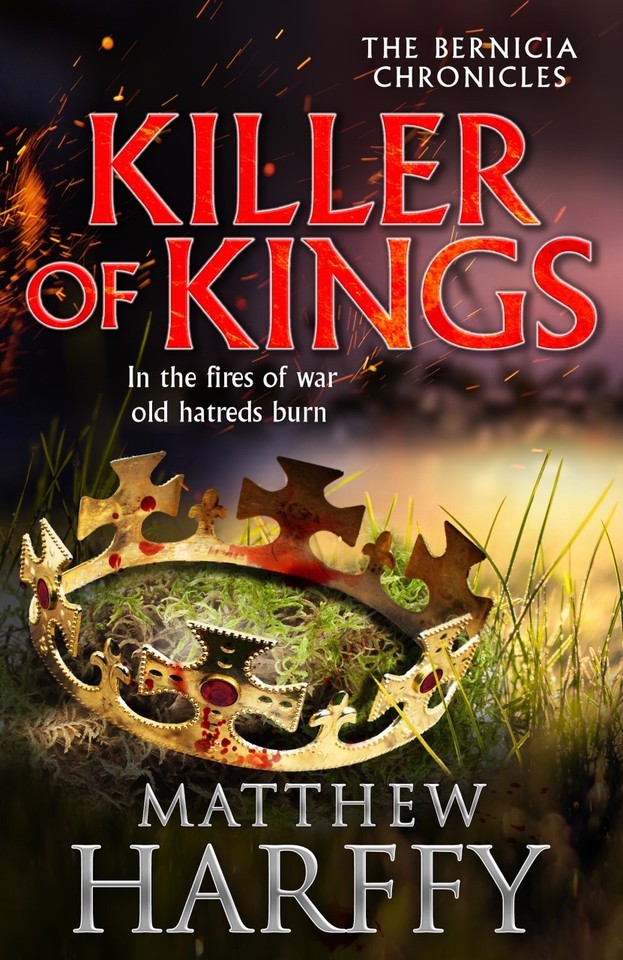
Book Corner: Killer of Kings by Matthew Harffy — History… the interesting bits! AD 636. Anglo-Saxon Britain. A gripping, action-packed historical thriller and the fourth instalment in The Bernicia Chronicles.
0 notes
Photo
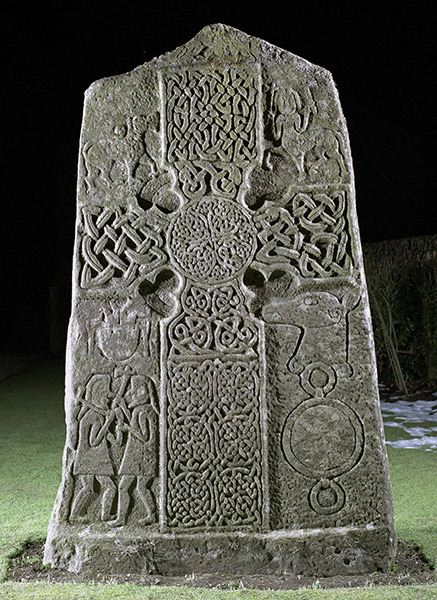
November 25th 1034 saw the death of Malcolm II at Glamis.
There's a lot to take in here, and a lot of supposition, it gets like that when you're delving into the history a millennium ago!
Malcolm had been King since 1005, at this time Scotland was far from the nation we know it to be today, according to the Irish annals which recorded his death, Malcolm was ard rí Alban, High King of Scotland, this was a title given to what was probably the most powerful of the rulers, his fellow kings included the king of Strathclyde, who ruled much of the south-west, various Norse-Gael kings of the western coasts and the Hebrides and, nearest and most dangerous rivals, the Kings or Mormaers of Moray.
To the south, in the kingdom of England, the Earls of Bernicia and Northumbria, whose predecessors as kings of Northumbria had once ruled most of southern Scotland, still controlled large parts of the south-east.
Malcolm, or Máel Coluim mac Cináeda, to give him his ancient name, was ruthless, he sought to make sure to secure his family's right of succession to throne, to do this he set about eliminating any possible claimants to the throne. There are scant details of the exact circumstances, but notable casualties included the grandson of Kenneth III, in 997, the killer of Constantine III is credited as being Cináed mac Maíl Coluim, "Kenneth son of Malcolm". Now the historians debate whether this was "oor" Malcolm here, but don't fully discount it.
John of Fordun a chronicler who we rely on a lot, writes that Malcolm defeated a Norwegian army in almost the first days after his coronation, but this is not reported elsewhere. Fordun says that the Bishopric of Mortlach (later moved to Aberdeen) was founded in thanks for this victory over the Norwegians, but this claim appears to have no foundation, so although Fordun is a very respected base for historians to delve into, I think we can probably put this down to a more modern phenomenon-Fake News!
The first reliable report of Malcolm's reign is of an invasion of Bernicia, which is now south-eastern Scotland and North East England. It resulted in a heavy defeat, by the Northumbrians led by Uchtred the Bold, later Earl of Bernicia, which was reported by the Annals of Ulster. A second war in Bernicia, probably in 1018, was more successful. The Battle of Carham, by the River Tweed, was a victory for the Scots led by Malcolm and the men of Strathclyde led by their king, Eógan II, so the neighbouring Kings were not afraid of getting together for some English bashing, this was a time England was having to deal with heavy interference from the Norsemen.
Meanwhile during The Battle of Carham, in modern day Strathclyde down to the Tweed, King Eógan the Bald was killed, this is generally thought to have been when Malcolm, know by the southern tribes as Forranach' meaning the destroyer took Strathclyde under his wing as part of the Kingdom of a growing "Scotland" but it was not fully part of the nation until Malcolm III, ( Canmore )
The good work he had done for his sons may have been for nothing, there is no evidence either survived after the year 1030, so the crown would pass to his grandchild. Truth be told the evidence he actually had sons is quite flimsy. He was a canny man though, and had married his daughters off wisely, to the Norse Earl Sigurd of Orkney., thus staking a claim for his forebears to the northern regions.
Strathclyde was to come back and haunt him though, Malcolm tried to place his grandson Duncan (later Duncan I of Alba) on the throne of Strathclyde. This displeased the Britons who had taken their eye off the ball while dealing with those pesky Vikings, but they it led to Malcolm's assassination at Glamis on this day in 1034.
As per usual there are differing stories about how he died, on say fighting off bandits, another he was killed by the sons of Máel Brigte of Moray, a notable Pictish leader
He was buried in the graveyard at Saint Oran's Chapel on the Isle of Iona.
Of his Dynasty, and his daughters he had placed in powerful families, the one wed to Earl Sigurd of Orkney, and their son Earl Thorfinn went on to bring much of Caithness and Sutherland into Scotland. One married Crínán, the Abbot of Dunkeld, and their son Duncan went on to succeed Malcolm II as Duncan I. And the third married Findlàech, the sub-king of Moray, and their son Macbeth went on to kill Duncan and become King Macbeth.
It's all a bit complicated trying to piece things together through so many different sources but I hope the post makes some some sort of sense. A stone at Glamis is said to mark where he died, but another source tells me it is his gravestone contradicting the source that said he is buried on Iona! Such is the plight of trying to put a post like this together.......
12 notes
·
View notes
Text
Storm of Steel by Matthew Harffy - historical fiction
Storm of Steel by Matthew Harffy – historical fiction
Here’s the blurb;
“AD 643. Anglo-Saxon Britain. A gripping, action-packed historical thriller and the sixth instalment in the Bernicia Chronicles. Perfect for fans of Bernard Cornwell.
Heading south to lands he once considered his home, Beobrand is plunged into a dark world of piracy and slavery when an old friend enlists his help to recover a kidnapped girl.
Embarking onto the wind-tossed seas,…
View On WordPress
0 notes
Text
Book Review - Warrior of Woden by Matthew Harffy - historical fiction
Book Review – Warrior of Woden by Matthew Harffy – historical fiction
Here’s the blurb;
“AD 642. Anglo-Saxon Britain. A gripping, action-packed historical thriller and the fifth instalment in the Bernicia Chronicles. Perfect for fans of Bernard Cornwell.
Oswald has reigned over Northumbria for eight years and Beobrand has led the king to ever greater victories. Rewarded for his fealty and prowess in battle, Beobrand is now a wealthy warlord, with a sizable warband.…
View On WordPress
0 notes